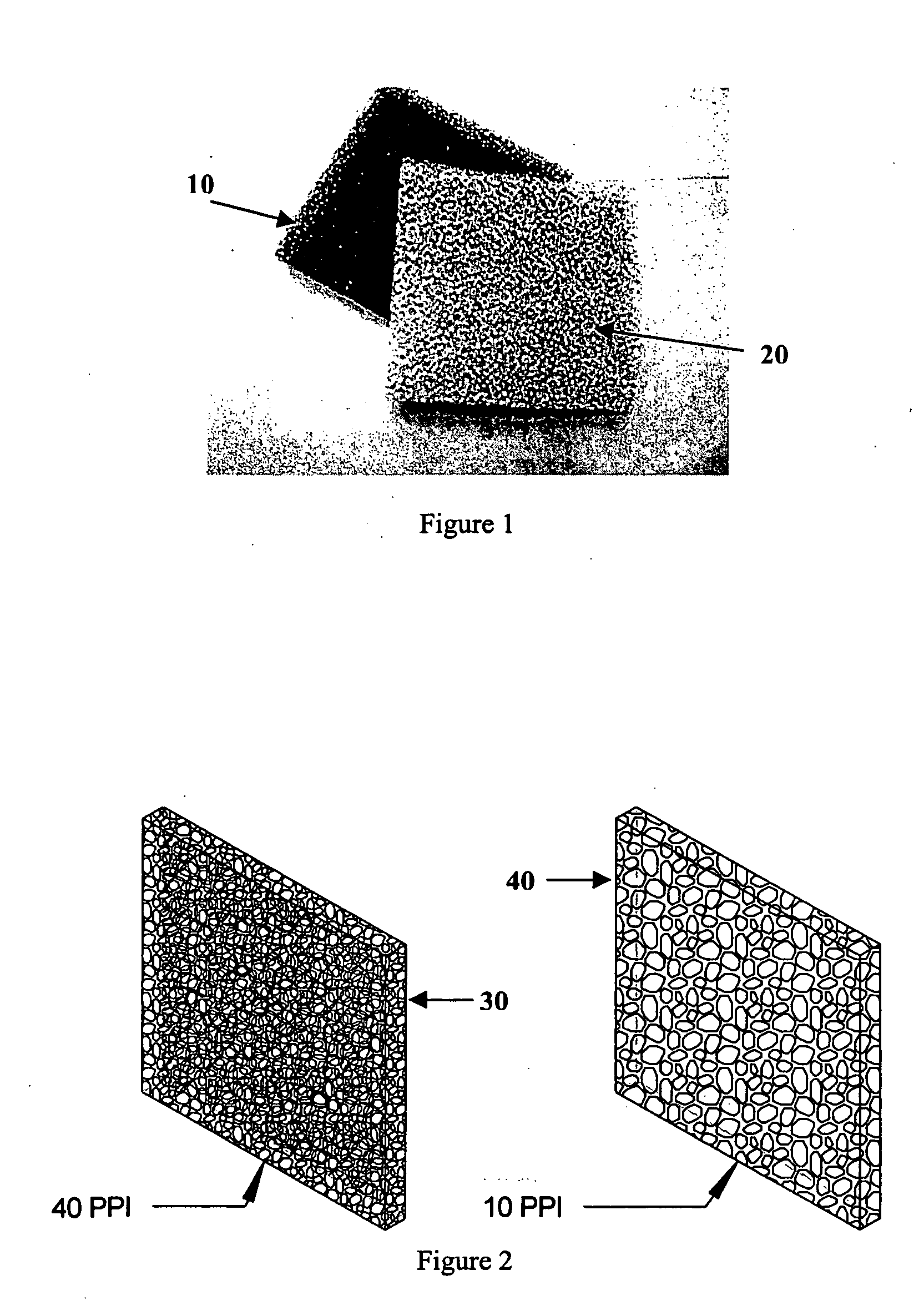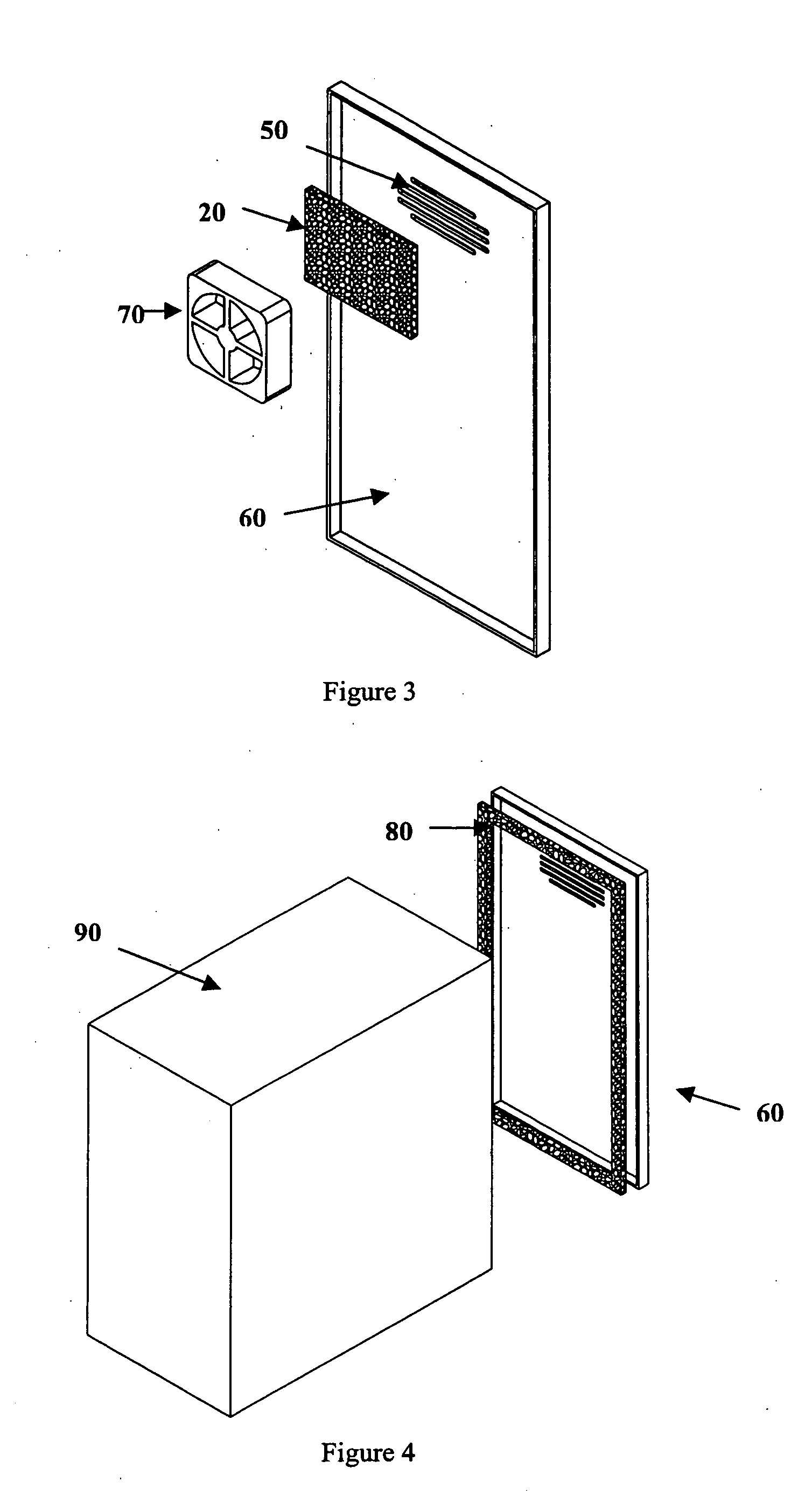EMI air filter
a technology of air filter and filter body, which is applied in the direction of electrical apparatus construction details, separation processes, coatings, etc., can solve the problems of reducing the effectiveness of enclosures, reducing the shielding effectiveness of enclosures, and reducing the ability of emi reflection and absorption of enclosures
- Summary
- Abstract
- Description
- Claims
- Application Information
AI Technical Summary
Benefits of technology
Problems solved by technology
Method used
Image
Examples
Embodiment Construction
[0029]FIG. 1 illustrates a foam substrate 10 (before metalization) and a metalized foam substrate 20. The foam substrates 10 of the present invention can be a reticulated foam or other similar materials that have an open-cell, skeletal structures. Some exemplary materials that can be used as the substrate include, but is not limited to, reticulated polyurethane, polyethylene, polypropylene, polyvinyl chloride, ether-type polyurethane, polyamide, polybutadiene, or silicone.
[0030] The foam substrates can be formulated in a wide variety of porosities (rated by the number of pores per inch (PPI)). In the present invention, the porosity of the foam substrate will typically vary between 10 PPI and 60 PPI, and preferably between approximately 10 PPI and 40 PPI. It should be appreciated, however, that the present invention is not limited to such porosity ranges, and the present invention can utilize foam substrates having a lower or higher porosity. FIG. 2 is a visual representation of a m...
PUM
| Property | Measurement | Unit |
|---|---|---|
| shielding effectiveness | aaaaa | aaaaa |
| frequency | aaaaa | aaaaa |
| frequency | aaaaa | aaaaa |
Abstract
Description
Claims
Application Information
 Login to View More
Login to View More - R&D
- Intellectual Property
- Life Sciences
- Materials
- Tech Scout
- Unparalleled Data Quality
- Higher Quality Content
- 60% Fewer Hallucinations
Browse by: Latest US Patents, China's latest patents, Technical Efficacy Thesaurus, Application Domain, Technology Topic, Popular Technical Reports.
© 2025 PatSnap. All rights reserved.Legal|Privacy policy|Modern Slavery Act Transparency Statement|Sitemap|About US| Contact US: help@patsnap.com



